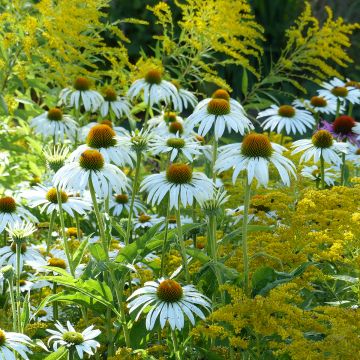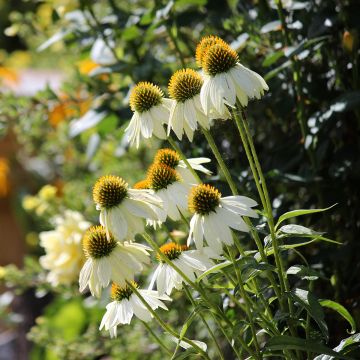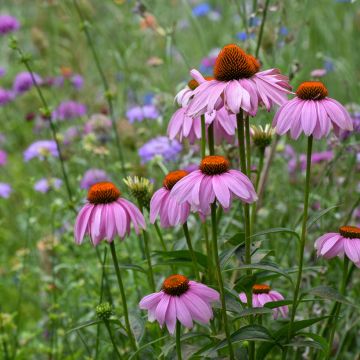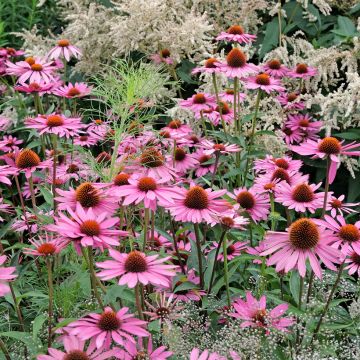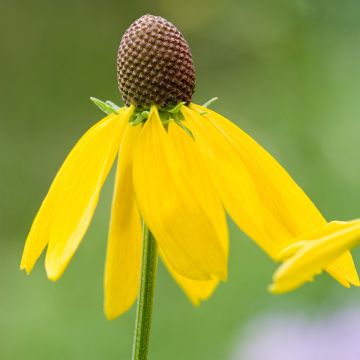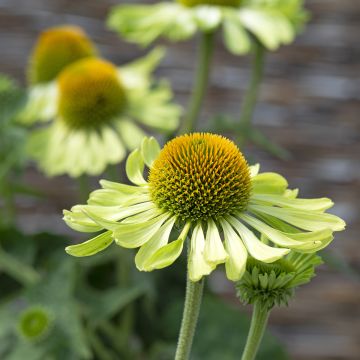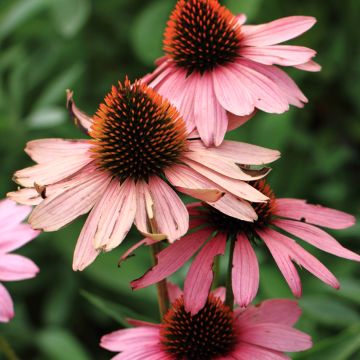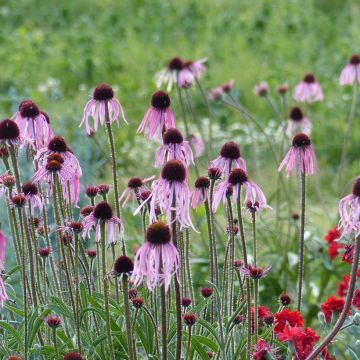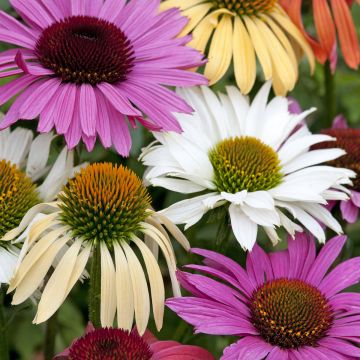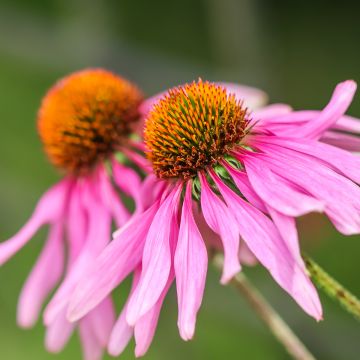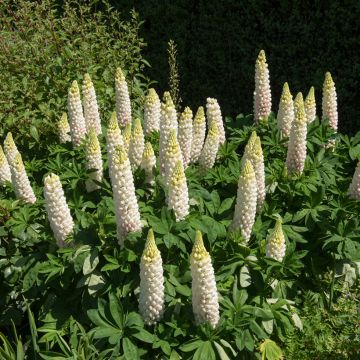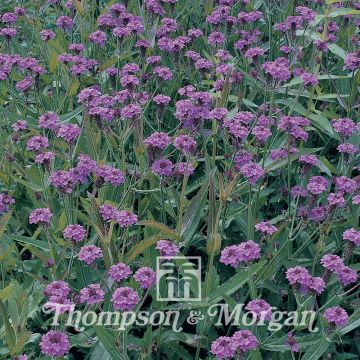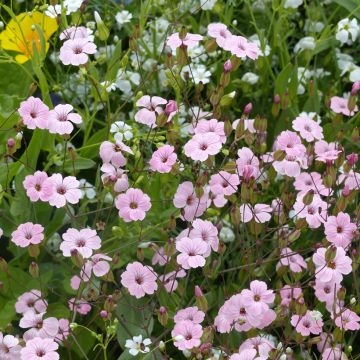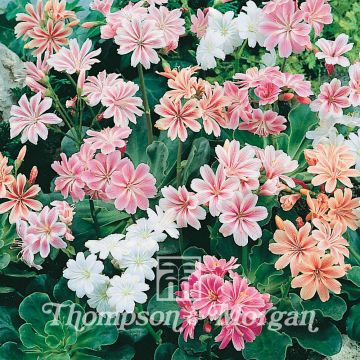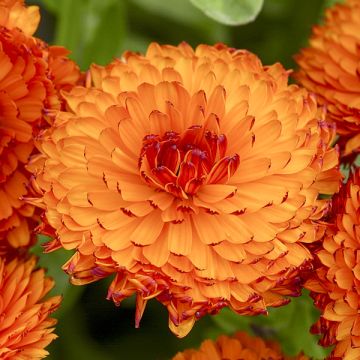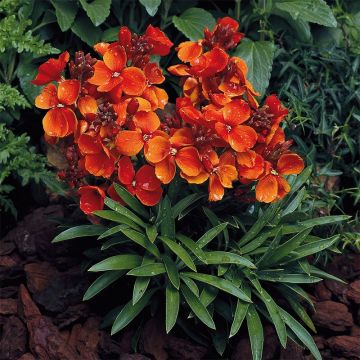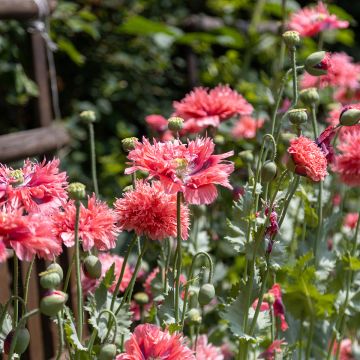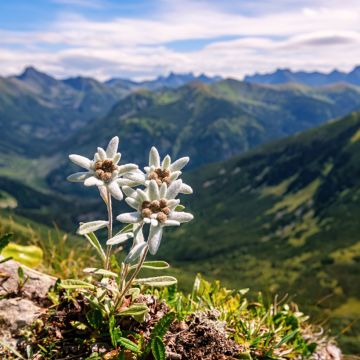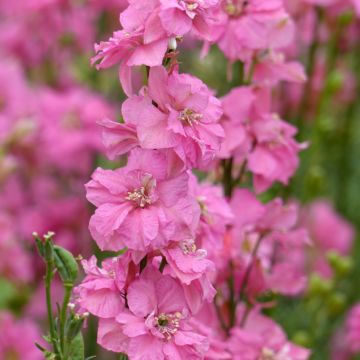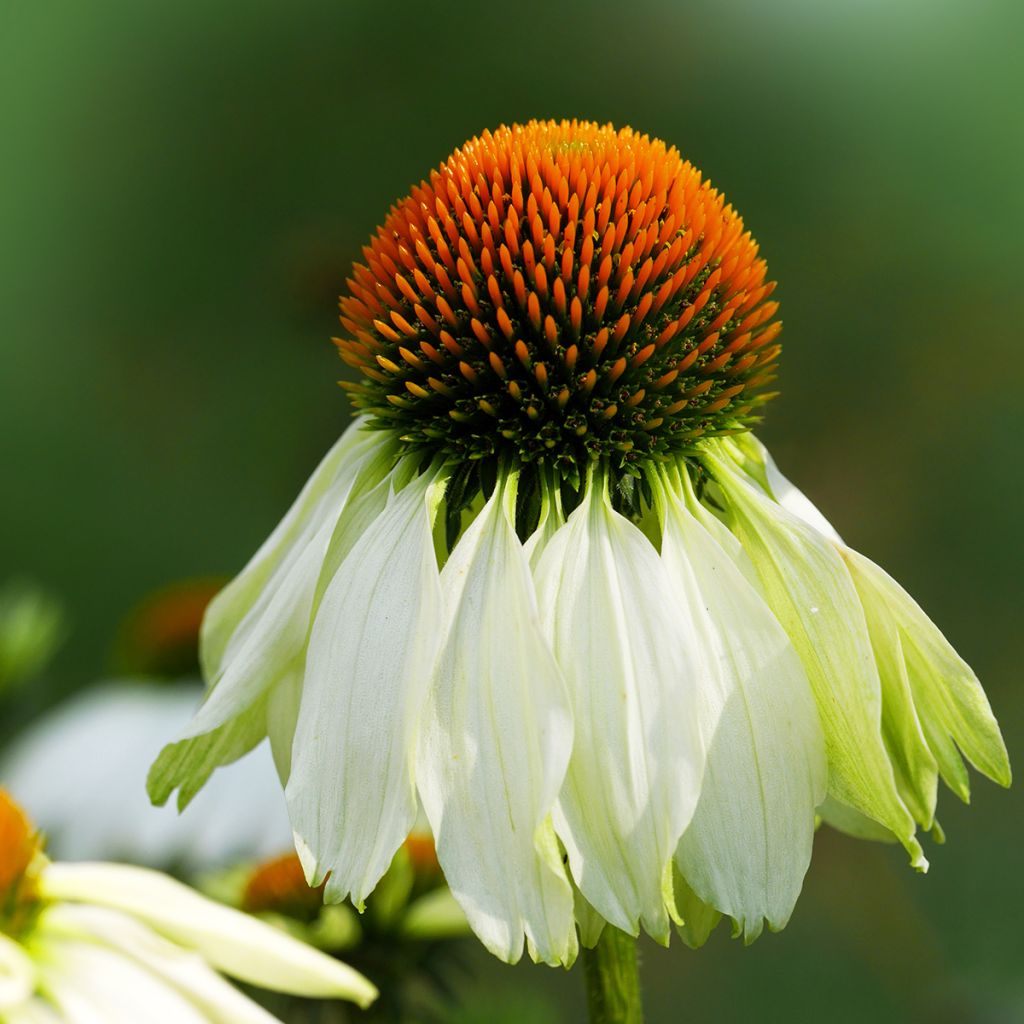

Echinacea purpurea 'Alba'
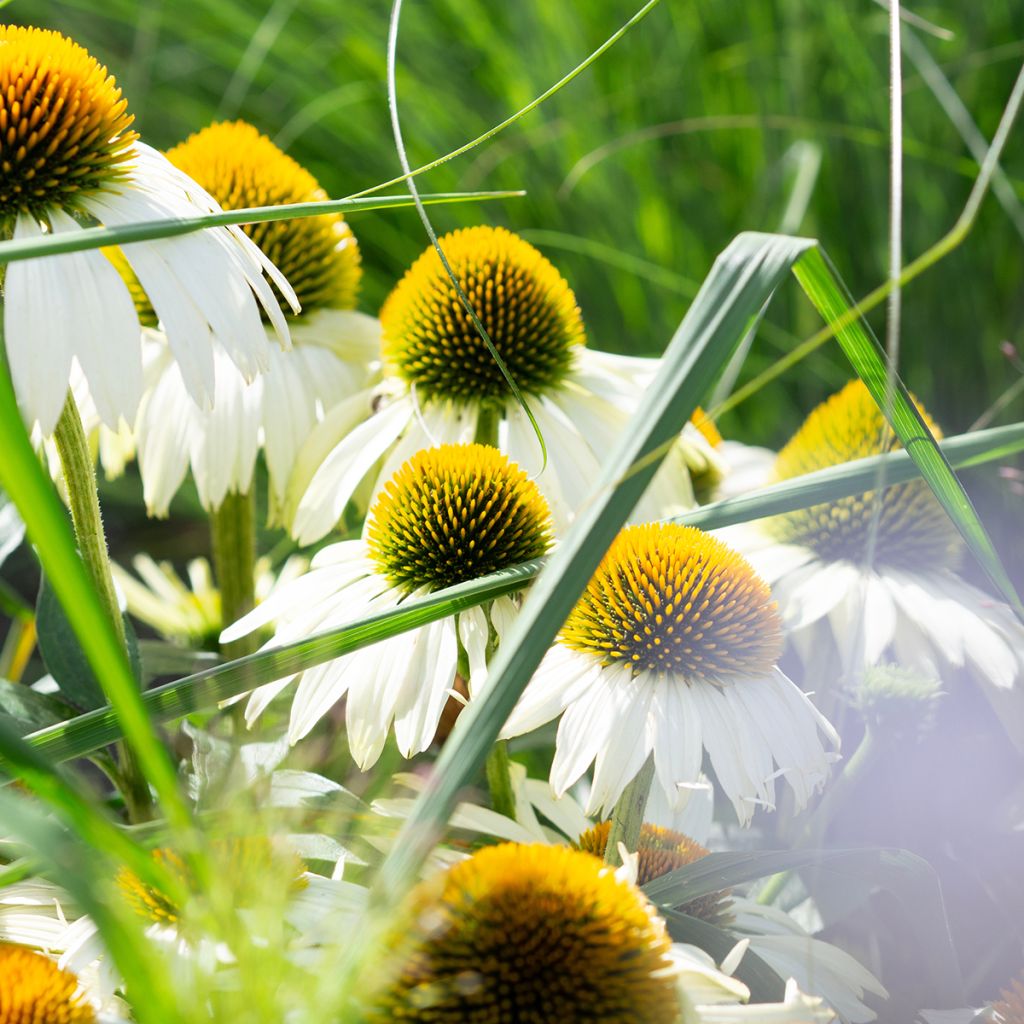

Echinacea purpurea 'Alba'
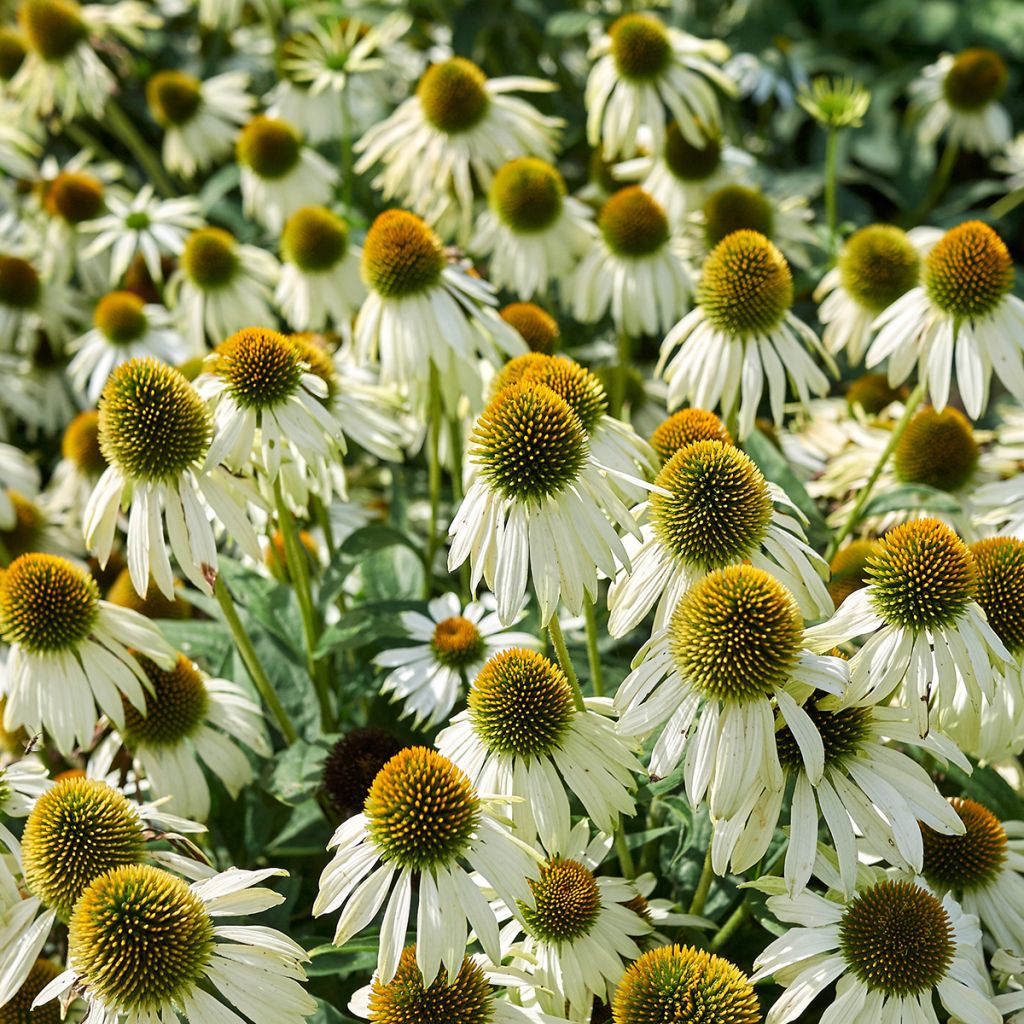

Echinacea purpurea 'Alba'
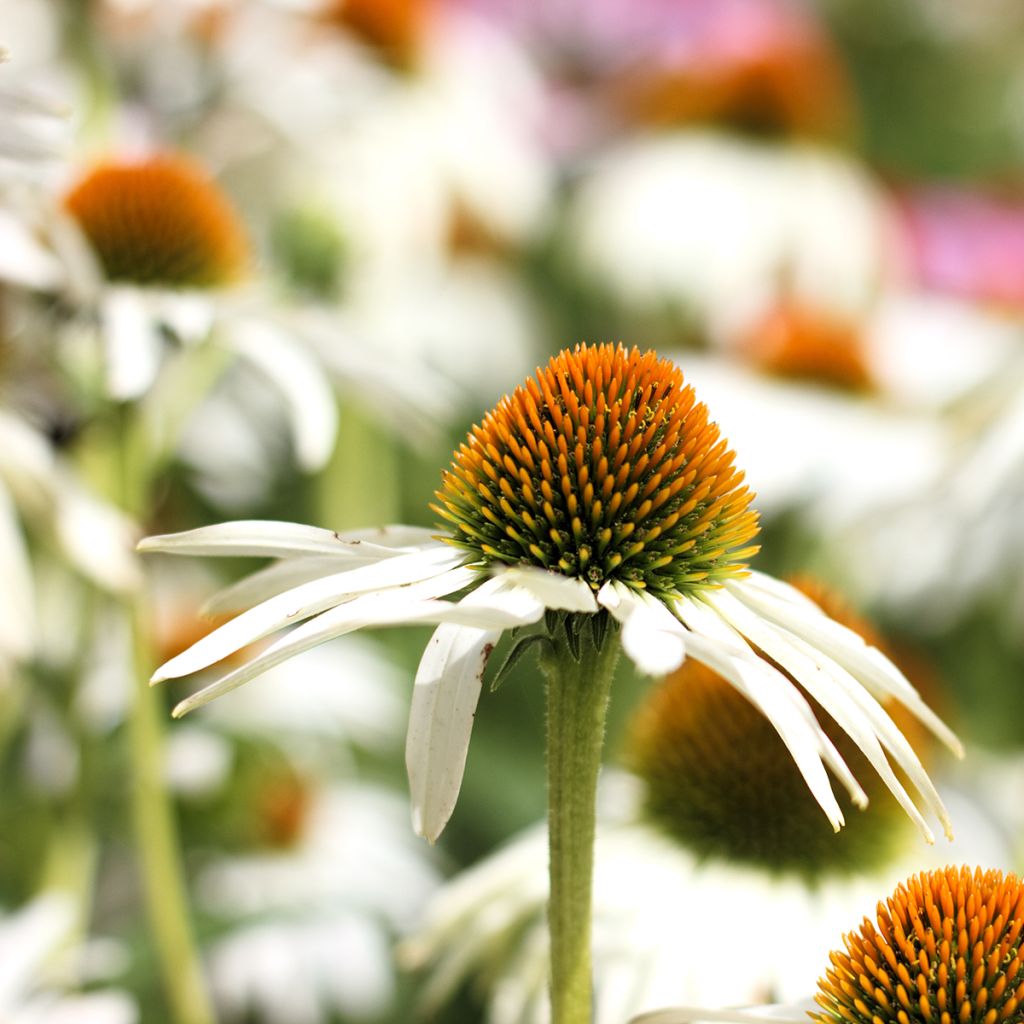

Echinacea purpurea 'Alba'
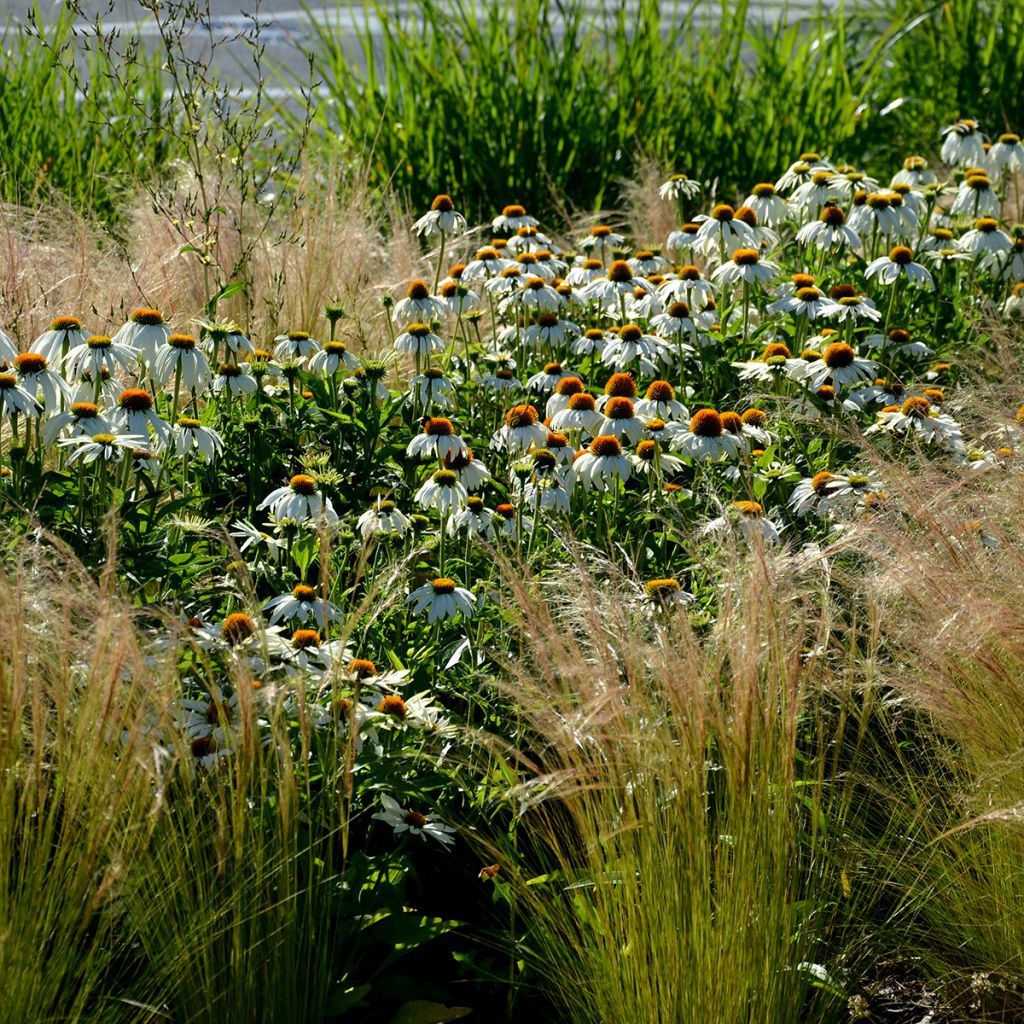

Echinacea purpurea 'Alba'
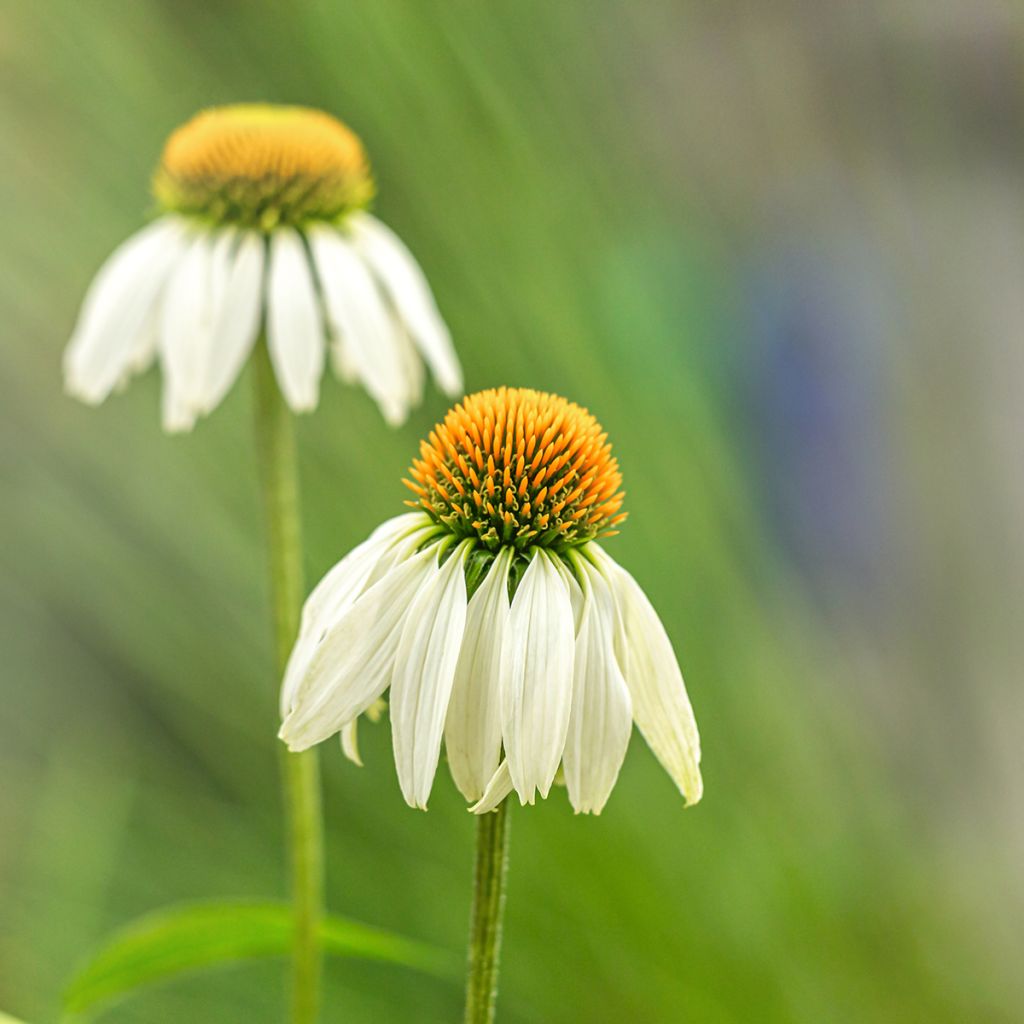

Echinacea purpurea 'Alba'
Echinacea purpurea 'Alba'
Echinacea purpurea Alba
Eastern purple coneflower, Purple coneflower
Good germination
Asseraf X., 16/05/2023
This plant carries a 6 months recovery warranty
More information
We guarantee the quality of our plants for a full growing cycle, and will replace at our expense any plant that fails to recover under normal climatic and planting conditions.
Seed-only orders are dispatched by sealed envelope. The delivery charge for seed-only orders is €3.90.
Does this plant fit my garden?
Set up your Plantfit profile →
Description
Echinacea purpurea 'Alba', a beautiful white form of Echinacea purpurea, is a lovely perennial that is as easy to grow as its wild relative with pink flowers. It is a flowering plant, forming a bushy and regular clump covered throughout the summer with large contrasting daisies, spreading their white and trailing ligules around a central cone that turns orange with green and then brown reflections. Its rough foliage stands out with its dark green colour. Its flowers are perfect for fresh or dried bouquets. The Purple Coneflower adapts to difficult conditions: to novice gardeners, occasionally to intense heat, humidity, and drought. It can even grow in poor soils.
Originally from the Western United States, Echinacea purpurea is a perennial with a strong character that looks like nothing else, but confidently colonizes rocky meadows, savannahs, clear undergrowth, and roadside edges in its natural habitat. 'Alba' is the white form of this intrepid pioneer. It has a dense and neat clumping habit, reaching 80cm (32in) in height and 50cm (20in) in width. The dark green leaves are covered in rough hairs. The flowering takes place from July to the end of summer, accompanying that of Inulas, asters, and ornamental tobaccos. It is visited by butterflies. The slightly branched stems are topped with a solitary inflorescence in a large head measuring 8cm (3in) in diameter. The central disk, initially flat, becomes prominent, like a pompom of tiny orange florets. All around, the fine white ligules with green bases are trailing. This plant firmly and deeply anchors itself in the ground with its well-developed root system. Its foliage disappears in winter.
The White Echinacea offers a graphic and highly contrasting flowering, in harmony with other simple perennials in cottage gardens. It is used in mixed borders with other simple flowers whose forms contrast (dahlias, daisies, daylilies, carnations) or in the company of Inulas, asters, yarrows, daisies, Echinops, Phlox. Lighten the scene by mixing in some ornamental grasses like Stipa tenuifolia, Muhlenbergia capillaris... Splendid in borders, the very unique flower of this echinacea will also be a part of fresh or dried flower bouquets.
Report an error about the product description
Echinacea purpurea 'Alba' in pictures




Flowering
Foliage
Plant habit
Botanical data
Echinacea
purpurea
Alba
Asteraceae
Eastern purple coneflower, Purple coneflower
North America
Other Echinacea seeds
Planting and care
Sow the seeds of Echinacea purpurea 'Alba' early in the spring, from March to May under shelters, in trays filled with a special sowing soil, maintained at 20-25°C (68-77°F). Cover the seeds with 1.5cm (1in) of soil. Germination takes 7 to 21 days. Take out the seedlings to gradually harden the plants in a cooler area. Then transplant the plants when they are large enough to handle, once the risk of frost has passed, keeping a distance of 30cm (12in) between each plant.
You can also sow from May to July directly outdoors, in a well-prepared and cleaned soil. Thin out the sowing to leave only one plant every 30 or 40cm (12 or 16in), in full sun. Echinacea takes its time to establish; its growth is rather slow. But in return, once in place, it requires no special care and is very resistant to pests and diseases. It is best planted in spring, in a sunny position, in a mix of potting soil and garden soil. The soil should be deep and loose to accommodate its root system. Deadhead the flowers as they fade. Divide the clump when flowering slows down. It is a rhizome plant that, if it likes its environment, can become invasive. As the plant ages, it becomes more susceptible to aphid attacks and powdery mildew. Mulch the base in May to retain moisture during summer, as it is sensitive to water shortage during flowering.
Sowing period
Intended location
-
, onOrder confirmed
Reply from on Promesse de fleurs
Flower seeds
Haven't found what you were looking for?
Hardiness is the lowest winter temperature a plant can endure without suffering serious damage or even dying. However, hardiness is affected by location (a sheltered area, such as a patio), protection (winter cover) and soil type (hardiness is improved by well-drained soil).

Photo Sharing Terms & Conditions
In order to encourage gardeners to interact and share their experiences, Promesse de fleurs offers various media enabling content to be uploaded onto its Site - in particular via the ‘Photo sharing’ module.
The User agrees to refrain from:
- Posting any content that is illegal, prejudicial, insulting, racist, inciteful to hatred, revisionist, contrary to public decency, that infringes on privacy or on the privacy rights of third parties, in particular the publicity rights of persons and goods, intellectual property rights, or the right to privacy.
- Submitting content on behalf of a third party;
- Impersonate the identity of a third party and/or publish any personal information about a third party;
In general, the User undertakes to refrain from any unethical behaviour.
All Content (in particular text, comments, files, images, photos, videos, creative works, etc.), which may be subject to property or intellectual property rights, image or other private rights, shall remain the property of the User, subject to the limited rights granted by the terms of the licence granted by Promesse de fleurs as stated below. Users are at liberty to publish or not to publish such Content on the Site, notably via the ‘Photo Sharing’ facility, and accept that this Content shall be made public and freely accessible, notably on the Internet.
Users further acknowledge, undertake to have ,and guarantee that they hold all necessary rights and permissions to publish such material on the Site, in particular with regard to the legislation in force pertaining to any privacy, property, intellectual property, image, or contractual rights, or rights of any other nature. By publishing such Content on the Site, Users acknowledge accepting full liability as publishers of the Content within the meaning of the law, and grant Promesse de fleurs, free of charge, an inclusive, worldwide licence for the said Content for the entire duration of its publication, including all reproduction, representation, up/downloading, displaying, performing, transmission, and storage rights.
Users also grant permission for their name to be linked to the Content and accept that this link may not always be made available.
By engaging in posting material, Users consent to their Content becoming automatically accessible on the Internet, in particular on other sites and/or blogs and/or web pages of the Promesse de fleurs site, including in particular social pages and the Promesse de fleurs catalogue.
Users may secure the removal of entrusted content free of charge by issuing a simple request via our contact form.
The flowering period indicated on our website applies to countries and regions located in USDA zone 8 (France, the United Kingdom, Ireland, the Netherlands, etc.)
It will vary according to where you live:
- In zones 9 to 10 (Italy, Spain, Greece, etc.), flowering will occur about 2 to 4 weeks earlier.
- In zones 6 to 7 (Germany, Poland, Slovenia, and lower mountainous regions), flowering will be delayed by 2 to 3 weeks.
- In zone 5 (Central Europe, Scandinavia), blooming will be delayed by 3 to 5 weeks.
In temperate climates, pruning of spring-flowering shrubs (forsythia, spireas, etc.) should be done just after flowering.
Pruning of summer-flowering shrubs (Indian Lilac, Perovskia, etc.) can be done in winter or spring.
In cold regions as well as with frost-sensitive plants, avoid pruning too early when severe frosts may still occur.
The planting period indicated on our website applies to countries and regions located in USDA zone 8 (France, United Kingdom, Ireland, Netherlands).
It will vary according to where you live:
- In Mediterranean zones (Marseille, Madrid, Milan, etc.), autumn and winter are the best planting periods.
- In continental zones (Strasbourg, Munich, Vienna, etc.), delay planting by 2 to 3 weeks in spring and bring it forward by 2 to 4 weeks in autumn.
- In mountainous regions (the Alps, Pyrenees, Carpathians, etc.), it is best to plant in late spring (May-June) or late summer (August-September).
The harvesting period indicated on our website applies to countries and regions in USDA zone 8 (France, England, Ireland, the Netherlands).
In colder areas (Scandinavia, Poland, Austria...) fruit and vegetable harvests are likely to be delayed by 3-4 weeks.
In warmer areas (Italy, Spain, Greece, etc.), harvesting will probably take place earlier, depending on weather conditions.
The sowing periods indicated on our website apply to countries and regions within USDA Zone 8 (France, UK, Ireland, Netherlands).
In colder areas (Scandinavia, Poland, Austria...), delay any outdoor sowing by 3-4 weeks, or sow under glass.
In warmer climes (Italy, Spain, Greece, etc.), bring outdoor sowing forward by a few weeks.

































